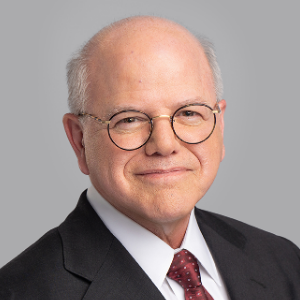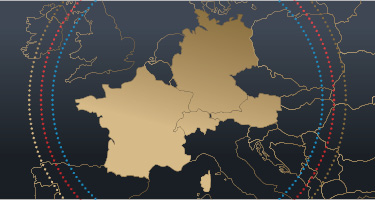What is the cause of a child’s impairments? This is a fundamental question in every birth injury lawsuit. To succeed in a claim of negligence against a client’s obstetric care-providers (physicians and/or nurses), medical malpractice lawyers must prove on a balance of probabilities that the child’s neurological problems are the result of a breach of the standard of care by the obstetrician and/or the obstetric nurses. Due to the high stakes involved, and the medical complexity of labour and delivery, defendants can be expected to argue forcefully that other factors are at the root of a child’s health issues.
One of the most common disorders associated with birth injury is Cerebral Palsy. When a baby is deprived of oxygen for a sufficient period of time around the time of birth, brain damage can occur which typically results in motor and cognitive impairments that lead to a diagnosis of Cerebral Palsy.
However, Cerebral Palsy is also known to occur in the absence of any trauma around the time of birth, in which case it may be associated with conditions such as intra-uterine infection, prematurity, neonatal stroke or intra-uterine growth restriction. As medical science advances, there is now also a recognition that genetic mutations – in particular, copy number variations - are associated with various neurodevelopmental conditions, including Cerebral Palsy.[1]
This new understanding, combined with the recent availability of technology to comprehensively test our genetic material (known as “whole-exome sequencing” and “whole-genome sequencing”) means that defendants in a birth injuries lawsuit may demand that the child undergo genetic testing in an attempt to find evidence that genetics, not the medical care around the time of labour, is the likely cause of the child’s problems.
At this time, however, genetic testing is unlikely to produce clear answers. Unlike disorders such as Huntington disease which is caused by a mutation in a single gene, Cerebral Palsy and other developmental disorders have not been associated with any single or small grouping of genes. As stated by Emrick et al in a recent journal article: “At the time of writing, there are more than 800 genes in the Online Mendelian Inheritance in Man (OMIM) database available online at https://www.omim.org associated with Cerebral Palsy, representing more than 900 clinical conditions.”[2]
Although testing may reveal various genetic variants associated with developmental disorders or Cerebral Palsy, those variations may be insufficient individually and could also be of uncertain significance, so that the overall results do not provide any clear answers as to causation. In a legal case, the results may only have the effect of obfuscating the issue and confusing the trier of fact.
Whole genome sequencing involves the analysis of virtually all of a person’s genes (roughly 11,000). A tissue sample of the child is required and samples from the parents are often required as well for comparison purposes. Whole genome sequencing is not currently available in Canada, other than for research purposes, so for litigation purposes, the testing is done through labs in the United States. The cost is currently very high, which adds significantly to the cost of disbursements that law firms such as Howie, Sacks & Henry incur on behalf of clients in the course of pursuing a birth injury claim.
In spite of the high cost, given that whole-exome sequencing and whole-genome sequencing is commercially available, such testing will likely be undertaken more often in the course of birth injuries litigation. This trend will only accelerate as the cost of testing decreases and the science of genetics develops further.
Regardless of the legal considerations, such testing may become commonplace in the course of treatment in any event. As stated by Oskoui, et al, in their article mentioned above, “In light of our new findings, however, we recommend that genomic analyses, in particular, high-resolution microarrays as a first tier and ultimately whole-genome sequencing, be integrated into the standard of practice for diagnosis and clinical categorization of CP.”[3]
As the science develops, we can expect that the testimony of genetics experts will play an important role in many medical malpractice claims. In addition to finding and retaining specialized experts, plaintiffs’ lawyers will need to be able to effectively translate the results of genetic testing into terms that a judge or jury can understand. While the ultimate impact on medical malpractice claims of this new access to genetic testing will not be known until more cases work their way through the court system, it is clear that lawyers who handle these claims will need to have a working understanding of genetic science in order to properly advise their clients.
Neil Sacks is a Founding Partner of Howie, Sacks & Henry. He handles major medical malpractice claims on behalf of children and adults who have suffered catastrophic injuries as a result of medical negligence. Neil is known for taking on difficult personal injury cases, achieving exceptional results, and making a difference in the quality of accident victims’ lives. He is often recommended by other lawyers to assist their clients in personal injury cases. Neil can be reached at 416-361-5811 or nesacks@hshlawyers.com.
[1] Oskoui, et al. Clinically Relevant Copy Number Variations Detected in Cerebral Palsy, 2015 Nature Communications 6:7949f
[2] The Expanding Role of Genetics in Cerebral Palsy, Phys Med Rehabil, Clin N Am 21 (2020) 15-24
[3] Oskoui, et al. Clinically Relevant Copy Number Variations Detected in Cerebral Palsy, 2015 Nature Communications 6:7949f
















